Sam Ferris and his siblings have a passion for protecting the house where they grew up, in Spokane, Washington. Now that their parents have passed away, the family has worked hard to get the house in tip-top shape, document it, share it and obtain landmark status to protect it before they pass it on to a new family.
The parents, Joel and Mary Ferris, owned the first modern home decor store in Spokane, called Joel, and they practiced what they preached. They hired up-and-coming architect Bruce Walker to design a modern home for them, and it was one of the first in the city. Due to resistance from their chosen neighborhood, they wound up building it on land given to them by a relative, on a portion of a larger family estate.
Walker was involved with the design of the headquarters of Washington Water Power, as was modernist landscape architect Lawrence Halprin. Both men had studied at Harvard under Bauhaus founder Walter Gropius. Walker recruited Halprin to design the landscape for the Ferris property.
Thanks to the efforts of the Ferris family, his landscape is extremely well preserved; in fact, the property received landmark status from the Spokane Register of Historic Places in September 2012. This status protects key elements of the landscape design. Sam Ferris is currently working to gain national landmark status for the entire property as well.
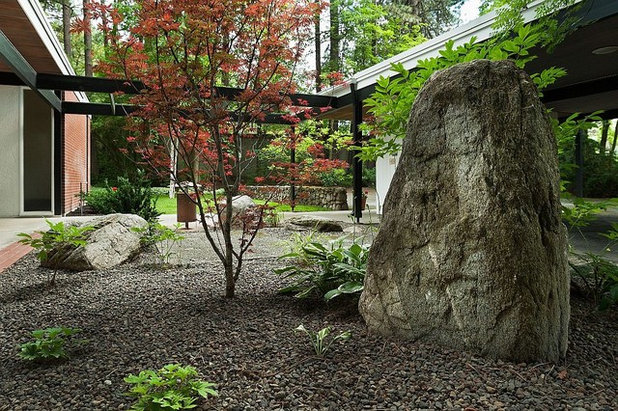
A Japanese-inspired meditative garden sits between the carport and the home, greeting guests.
"My mom was always very proud that Halprin picked each of these boulders out himself," says Sam Ferris. "He was very specific about the placement."
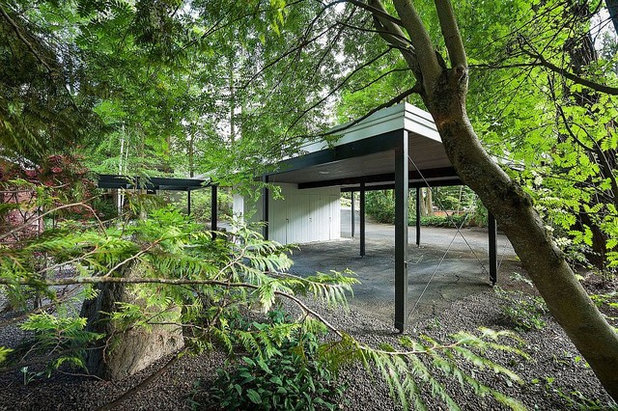
"The meditative garden is very peaceful," Ferris says. "You feel a sense of calm as you pass through it, whether you're walking out of the house to start your day or returning home at the end of it."
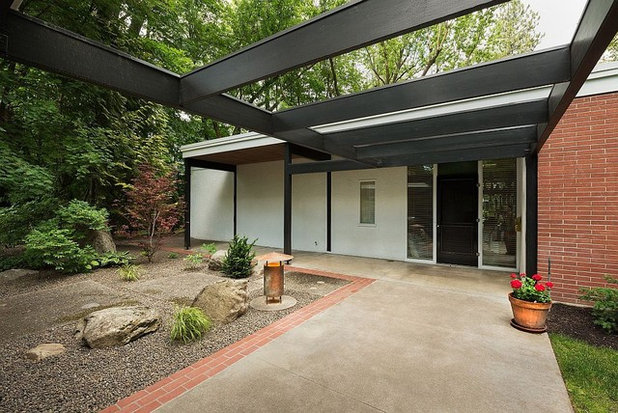
Halprin designed the three steel lanterns used throughout the landscape. "They have perforations in them, so light glows not only from the top and bottom, but through the little holes as well," Ferris points out.
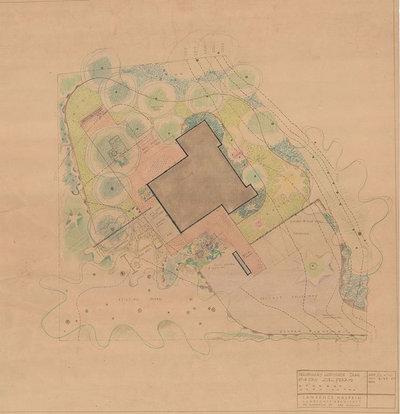
This is Halprin's original plan for the property, dated 1955.
Halprin divided the property into distinct functional spaces: the meditative garden, the play garden and the back garden.
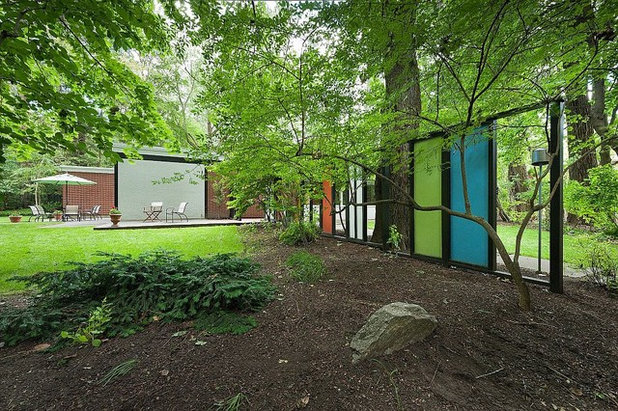
This colorful wall visually separates the play garden from the back garden. "The panels added wonderful colors to the yard in winter, when everything was covered in snow," Ferris says.
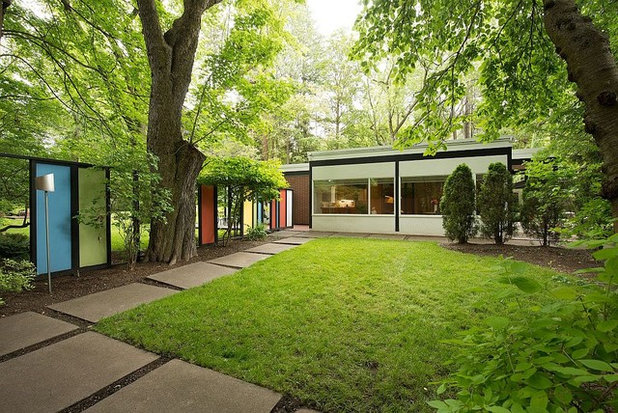
The play garden, shown here, once contained the kids' swing set, slide and sandbox.
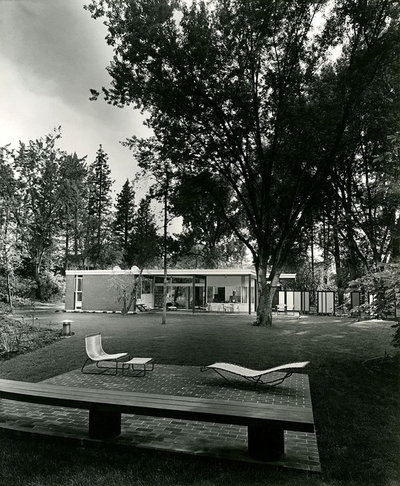
This picture, taken in 1956, shows the back lounge patio. You can see another one of the lanterns on the left.
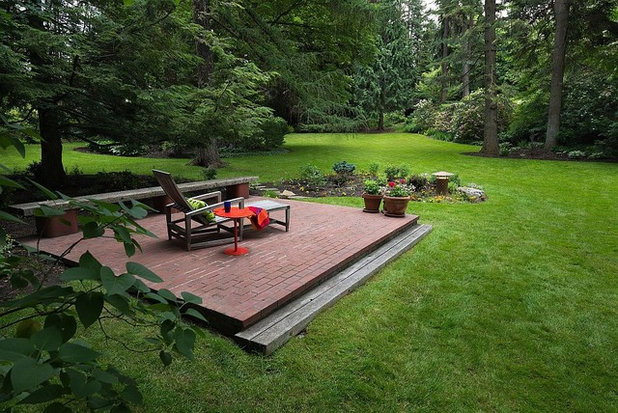
Moving around to the back garden, Halprin placed this lounge patio out toward the edge of the property. Years later the family obtained almost another half acre beyond it, so the flower bed you see here was enlarged to fit the yard's new scale. The Ferris family hired landscape architects who looked to Halprin's original plans to follow his intentions when working on the new yard.
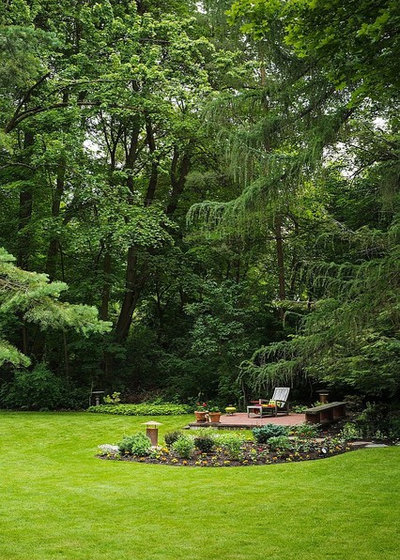
Because the house sits on property that had been part of a larger family estate, there were beautiful mature trees for Halprin to design around.
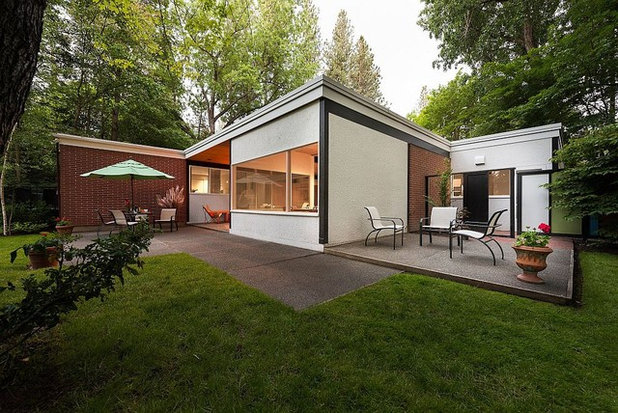
"My parents entertained a lot, and the concept of free-flowing movement between indoors and out was part of the modern era and their lifestyle," says Ferris.
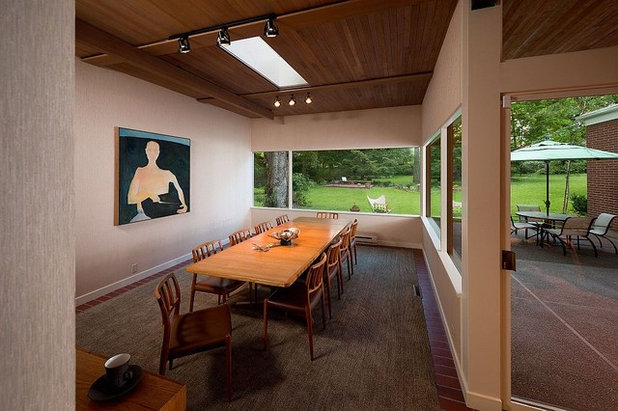
The concept works from the inside looking out as well; views of the beautiful yard can be enjoyed from all over the house.
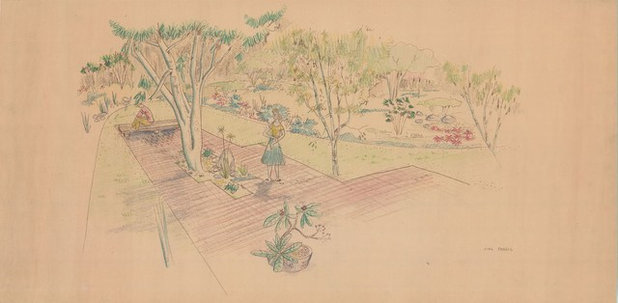
One of Halprin's charming sketches includes Joel and Mary Ferris enjoying their yard. "The yard was a beautiful and relaxing space that the whole family enjoyed," says Ferris. "My siblings and I were very lucky to have grown up here." You can follow the story over at Ferris' website, Spokane Midcentury.





